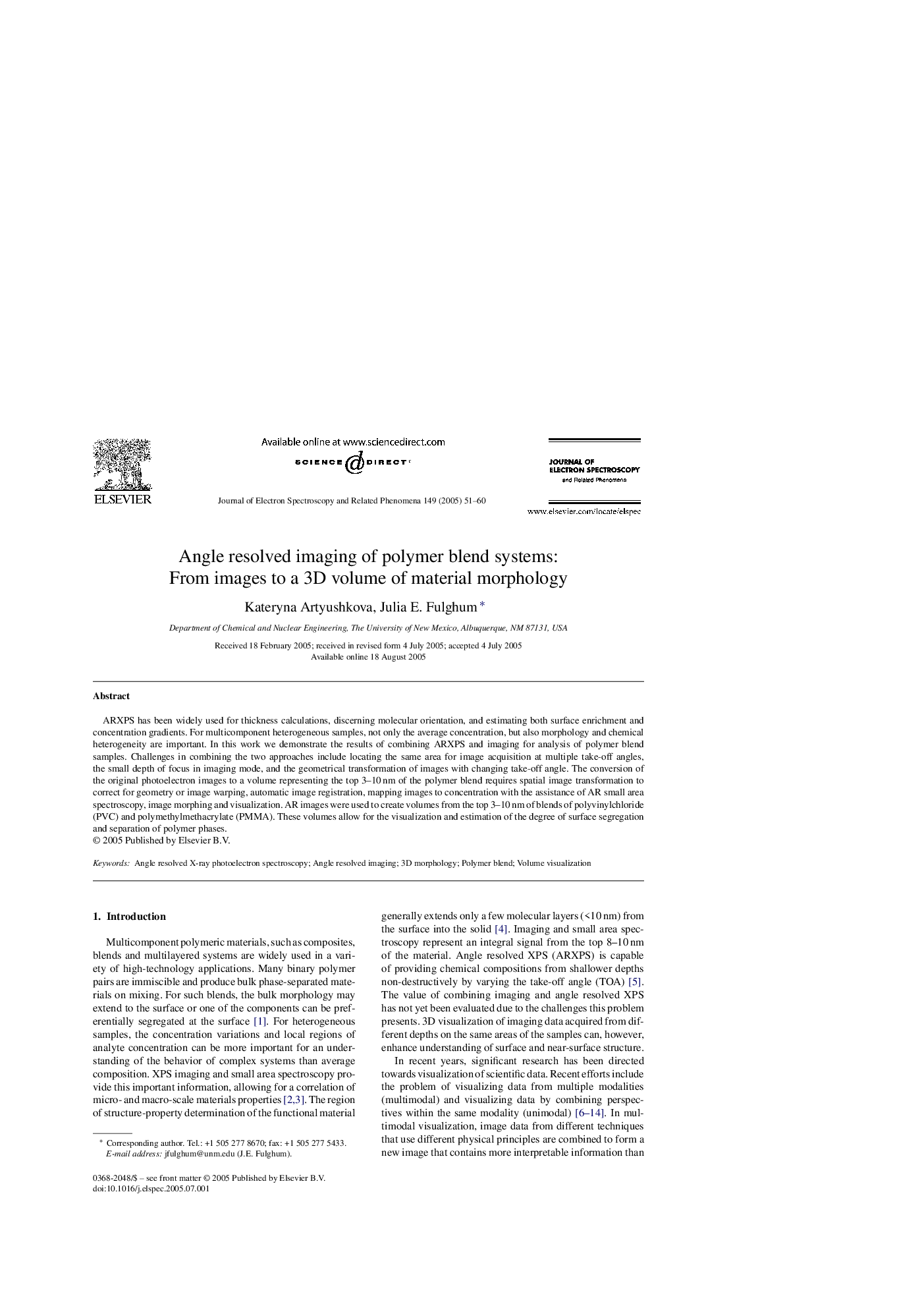| Article ID | Journal | Published Year | Pages | File Type |
|---|---|---|---|---|
| 9585190 | Journal of Electron Spectroscopy and Related Phenomena | 2005 | 10 Pages |
Abstract
ARXPS has been widely used for thickness calculations, discerning molecular orientation, and estimating both surface enrichment and concentration gradients. For multicomponent heterogeneous samples, not only the average concentration, but also morphology and chemical heterogeneity are important. In this work we demonstrate the results of combining ARXPS and imaging for analysis of polymer blend samples. Challenges in combining the two approaches include locating the same area for image acquisition at multiple take-off angles, the small depth of focus in imaging mode, and the geometrical transformation of images with changing take-off angle. The conversion of the original photoelectron images to a volume representing the top 3-10Â nm of the polymer blend requires spatial image transformation to correct for geometry or image warping, automatic image registration, mapping images to concentration with the assistance of AR small area spectroscopy, image morphing and visualization. AR images were used to create volumes from the top 3-10Â nm of blends of polyvinylchloride (PVC) and polymethylmethacrylate (PMMA). These volumes allow for the visualization and estimation of the degree of surface segregation and separation of polymer phases.
Keywords
Related Topics
Physical Sciences and Engineering
Chemistry
Physical and Theoretical Chemistry
Authors
Kateryna Artyushkova, Julia E. Fulghum,
